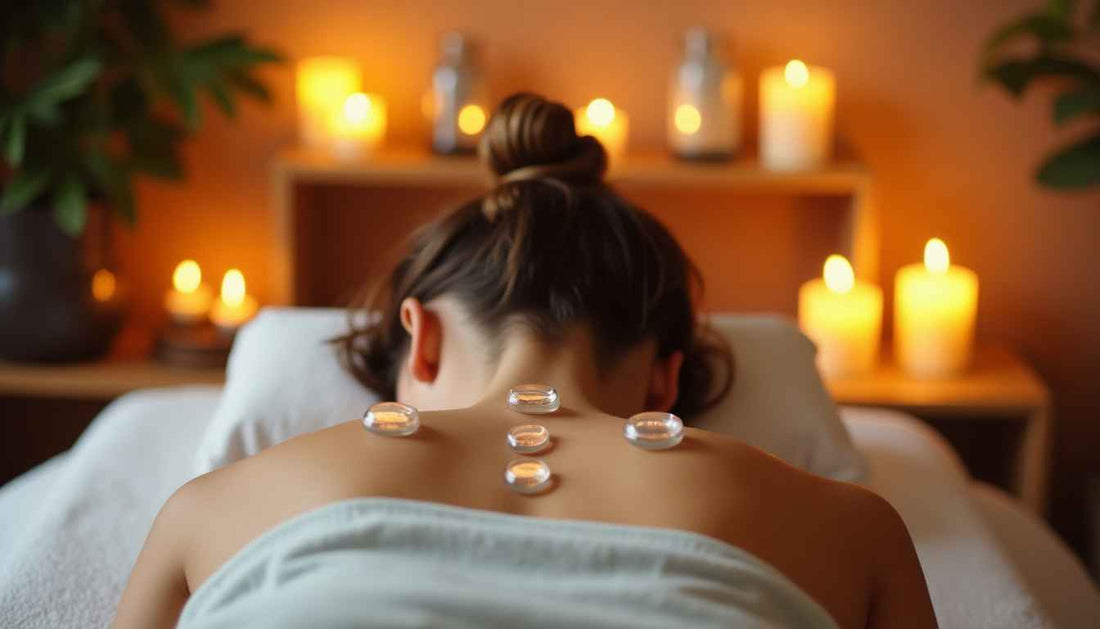
Cupping Therapy for Anxiety: A Natural Path to Inner Calm
Share
Anxiety can feel like a relentless storm—tight chest, racing mind, constant tension. While medication and therapy help many, more people are exploring natural, holistic approaches to mental wellness. Cupping therapy for anxiety is one such ancient practice now making waves in the modern wellness world. Known for releasing physical tension and regulating the nervous system, cupping might just be your new go-to for finding calm from the inside out.
Understanding Anxiety from a Holistic Perspective
Anxiety isn't just in the mind—it manifests physically through muscle tension, shallow breathing, sleep disturbances, and digestive issues. Traditional Chinese Medicine (TCM) views anxiety as a disruption of the body’s qi (energy) and blood flow, often caused by emotional stress and energetic stagnation.
Cupping therapy, known for increasing circulation and removing blockages, is a natural fit for restoring that internal balance and promoting a calmer state.
How Cupping Therapy Relieves Anxiety
Cupping helps anxiety through both physical and neurological effects:
1. Stimulates the Parasympathetic Nervous System
The gentle suction activates your "rest and digest" mode, reducing heart rate, calming brain activity, and promoting relaxation.
2. Releases Tension in the Neck and Shoulders
Anxiety often shows up as muscle tightness. Cupping breaks up adhesions and improves mobility in key stress zones.
3. Improves Blood and Qi Flow
Better circulation nourishes the brain and nervous system, helping you feel more balanced and alert.
4. Enhances Sleep Quality
Many users report deeper, uninterrupted sleep after cupping—critical for managing anxiety long-term.
Best Types of Cupping for Anxiety
- Dry Cupping on the Upper Back & Shoulders: Targets tension that builds up during anxious episodes.
- Facial or Head Cupping (Silicone): Light suction near the scalp and temples may help calm the mind.
- Moving Cupping: Involves sliding cups along the back with oil to relax the nervous system.
Recommended Cupping Points for Anxiety
According to TCM, common points include:
- GB21 (Jian Jing): Located at the top of the shoulders—helps release stress and tension.
- BL13 (Lung Shu): Linked to breath and grief, often used for emotional release.
- DU20 (Bai Hui): At the crown of the head—calms overthinking and racing thoughts.
What a Cupping Session for Anxiety Looks Like
- Initial Assessment: Practitioner evaluates stress levels, physical symptoms, and emotional history
- Treatment Time: 15–25 minutes
- Aftercare: Hydration and rest are encouraged; some report feeling light or emotional as the body adjusts
Scientific Support: Does Cupping Therapy Help Anxiety?
Emerging studies support the idea that cupping may help regulate cortisol (the stress hormone) and improve autonomic nervous system balance. While more research is needed, preliminary results and patient reports are promising.
One clinical study published in the Journal of Acupuncture and Meridian Studies showed that cupping improved sleep and reduced anxiety markers in participants after just a few sessions.
Real Results: What People Are Saying
Clients who receive regular cupping for anxiety often describe:
- Less daily overwhelm
- Fewer panic attacks
- Better sleep and energy
- A renewed sense of emotional clarity
Many integrate cupping into a self-care routine along with therapy, mindfulness, or herbal remedies.
FAQs (People Also Ask):
Is cupping therapy effective for anxiety?
Yes, cupping has been shown to activate the parasympathetic nervous system, ease tension, and reduce cortisol levels—making it effective for anxiety relief.
How often should I get cupping for anxiety?
Once or twice a week is ideal during high-stress periods, then tapering to bi-weekly or monthly maintenance.
Is cupping therapy safe for mental health conditions?
Cupping is a safe, complementary therapy but should not replace medical or psychiatric care. It’s most effective as part of a holistic treatment plan.
Will I feel immediate relief after a cupping session?
Many people feel calmer and lighter right after the first session, though deeper effects build over time with consistency.
How does cupping therapy help with anxiety?
Cupping therapy helps with anxiety by stimulating the parasympathetic nervous system, reducing muscle tension, and improving circulation, all of which promote calm and emotional balance.
Final Thoughts
Cupping therapy for anxiety offers a gentle, non-pharmaceutical option for reducing stress and promoting emotional balance. If you’re seeking a more holistic path to peace of mind, this ancient practice might be just what you need.
Call to Action (CTA):
Looking for natural ways to manage anxiety? Download our Free Guide: “7 Holistic Therapies to Calm the Mind Naturally” and take your first step toward a more peaceful life—no pills required.
Related Articles:
